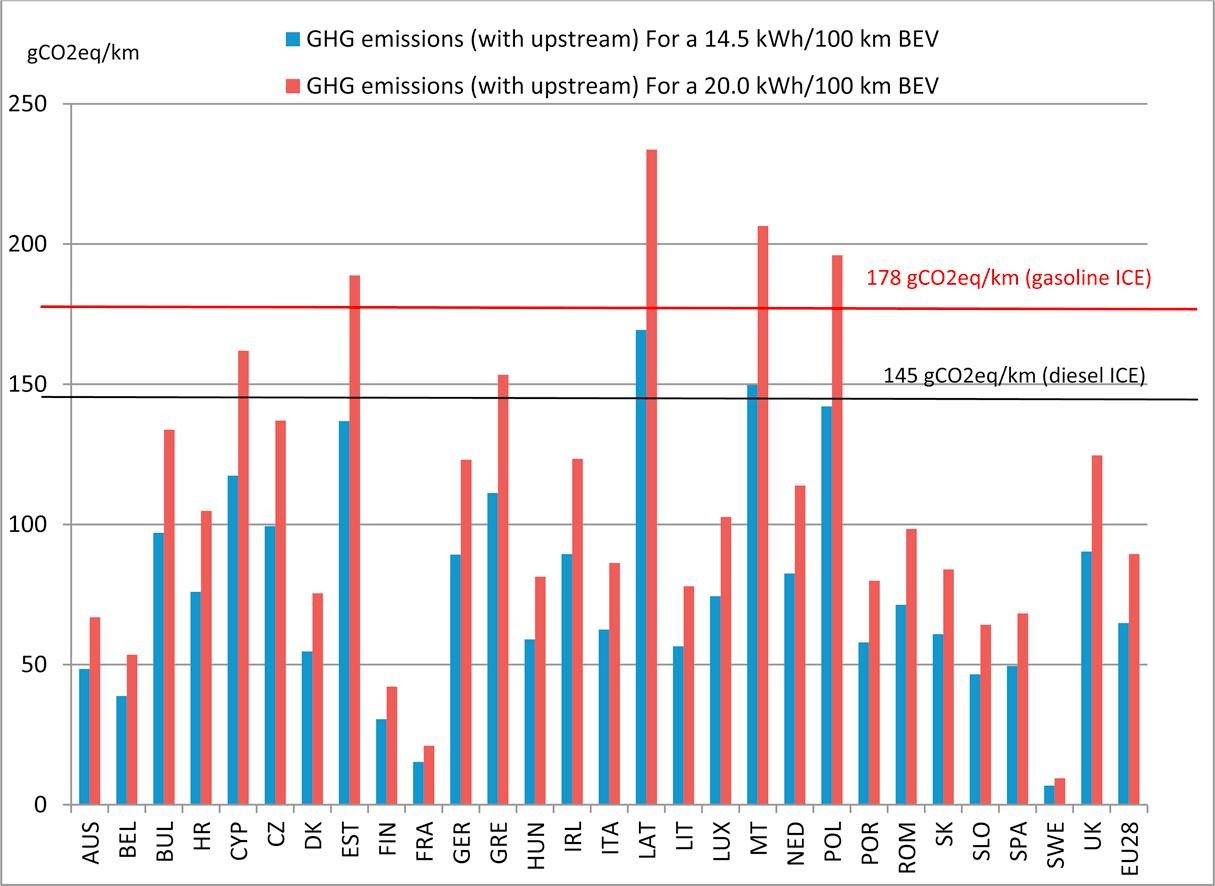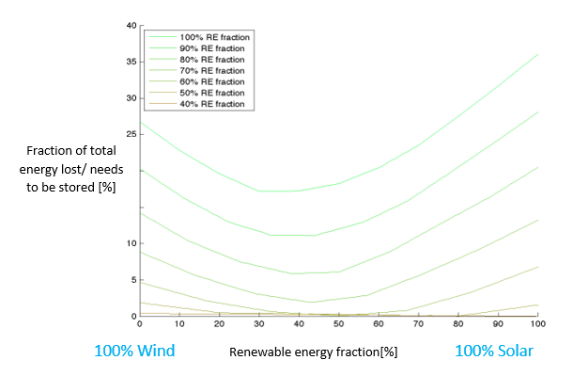3.4.2 Lecture Notes Charging Electric Vehicles from Renewables
Course subject(s)
3. Smart Charging and Integration of Electric Mobility
This image is from freepik
This lecture will discuss how electric vehicles can be used as an energy storage and as the potential for vehicle to grid. The following topics will be covered:
- Well-to-wheel emissions of EV’s
- Charging electric vehicles with renewable energy sources
- The effect of variability in renewable energy production
Well-to-wheel emissions of EV’s
At first sight, electric vehicles seem sustainable, since they do not generate harmful tail-pipe emissions. However, if the bigger picture of the energy system is considered, it can be realized that most of the electricity is produced from fossil fuels. Therefore, there are indirect emissions related to electric vehicles.
To account for the indirect emissions, the Alternative Fuels Data Center (AFDC) uses the term “well-to-wheel emissions”. Well-to-wheel emissions of a vehicle include all emissions related to fuel production, processing, distribution, and use in the vehicle.
For gasoline vehicles, the well to wheel emissions includes all emissions from the producing and extracting gasoline, refining, and distributing it to the fuel stations, and finally burning it in vehicles. While for electric vehicles, it is the emissions from the production of fuel and its use in the power plant for producing electricity, then transporting and charging the electric vehicle battery and finally using it in the vehicle for transportation.
An important parameter for comparing sustainability is the Greenhouse Gas (GHG) emissions from power generation in grams of CO2 divided by the number of produced electricity in kWh. Poland, for example, has an emission of 751 grams of CO2 per kWh electricity due to large dependence on fossil fuels. On the other hand, Iceland has an emission of 0 grams of CO2 per kWh electricity, since almost all its electricity comes from hydro and geothermal energy sources. As a rule of thumb, it can be assumed that 1 kWh of electricity gives a range of 5 km. Therefore, the CO2 emission per km can easily be estimated.
In the figure below, GHG emissions per km are shown for several EU countries. The horizontal red line represents the GHG emissions per km for a gasoline car, and the horizontal black line represents the GHG emissions per km for a diesel car. It can be seen that in almost all countries, the EV’s have lower emissions than gasoline or diesel cars. However, it can also be seen that in some countries this is not the case. The lesson from this graph is that in those countries, not only the EV has to be introduced, but also the electricity generation has to become more sustainable.

Source of image: Alberto Moro, Laura Lonza, Electricity carbon intensity in European Member States: Impacts on GHG emissions of electric vehicles, Transportation Research Part D: Transport and Environment, Volume 64, 2018
Charging electric vehicles with renewable energy sources
One option for charging electric vehicles with renewable energy is to use solar energy. This has the following benefits:
- There are zero net emissions, since the electricity comes from a sustainable source.
- Both types of energy are DC energy, which opens the possibility to directly exchange the power without converting it into AC power.
- EV batteries can be used as a storage for the variable PV generation via vehicle to grid.
- The impact of the PV panels and the EV on the grid is reduced.
- Solar panels can be installed directly on the vehicle itself or on buildings close to the location of demand.
The effect of variability in renewable energy production
A key challenge for charging EV’s with solar energy is the variability in generation. There is significant difference in energy production between the winter, where the energy production can be 1 kWh, and the summer, where the energy production can be 75 kWh. If a 24-kWh electric vehicle is charged every day, this would mean that about half a car battery is charged during a day in the winter, about a full car battery is charged in a day in the spring, and two full car batteries are charged on a day in the summer.
The same variability occurs when wind energy is used for charging. However, the variation in the wind energy is opposite to the variation in solar energy, which means that more wind energy is available in the winter compared to the summer. This means that wind and solar energy can be combined. In the figure below, the fraction of lost/ stored renewable energy is shown for different combinations of renewable energy. On the left 100% of the renewable energy is wind and on the right 100% of the renewable energy comes from the sun. It can be seen that for different load profiles, it is always better to combine wind and solar than to use only one of them.
Conclusion
This lecture introduced the concept of well-to-wheel emissions. It was also shown that for some countries it is not only enough to integrate electric vehicles, but also make the electricity more sustainable. After this, it was discussed how renewable energy can be used for the charging of EV and how a combination of wind and solar can create an optimal solution.

Technology of Intelligent and Integrated Energy Systems by TU Delft OpenCourseWare is licensed under a Creative Commons Attribution-NonCommercial-ShareAlike 4.0 International License.
Based on a work at https://online-learning.tudelft.nl/courses/technology-of-intelligent-and-integrated-energy-systems/




